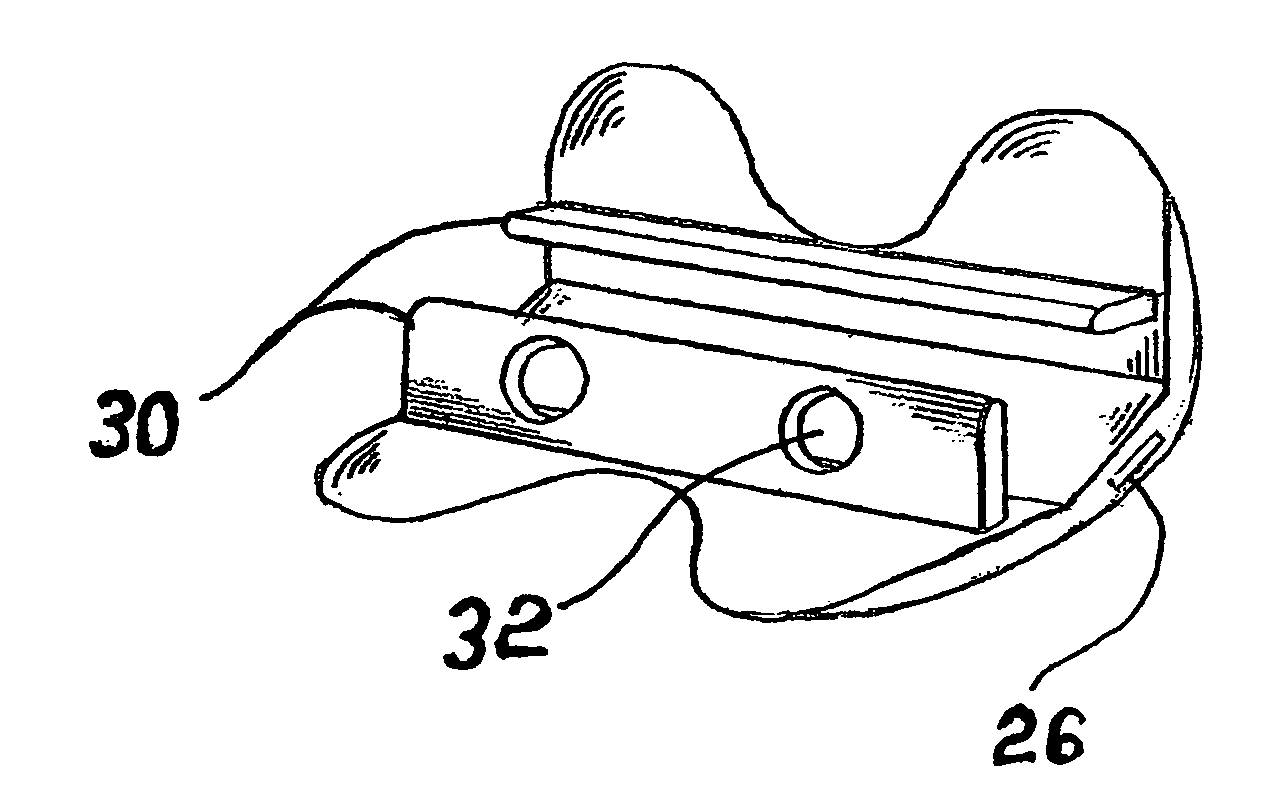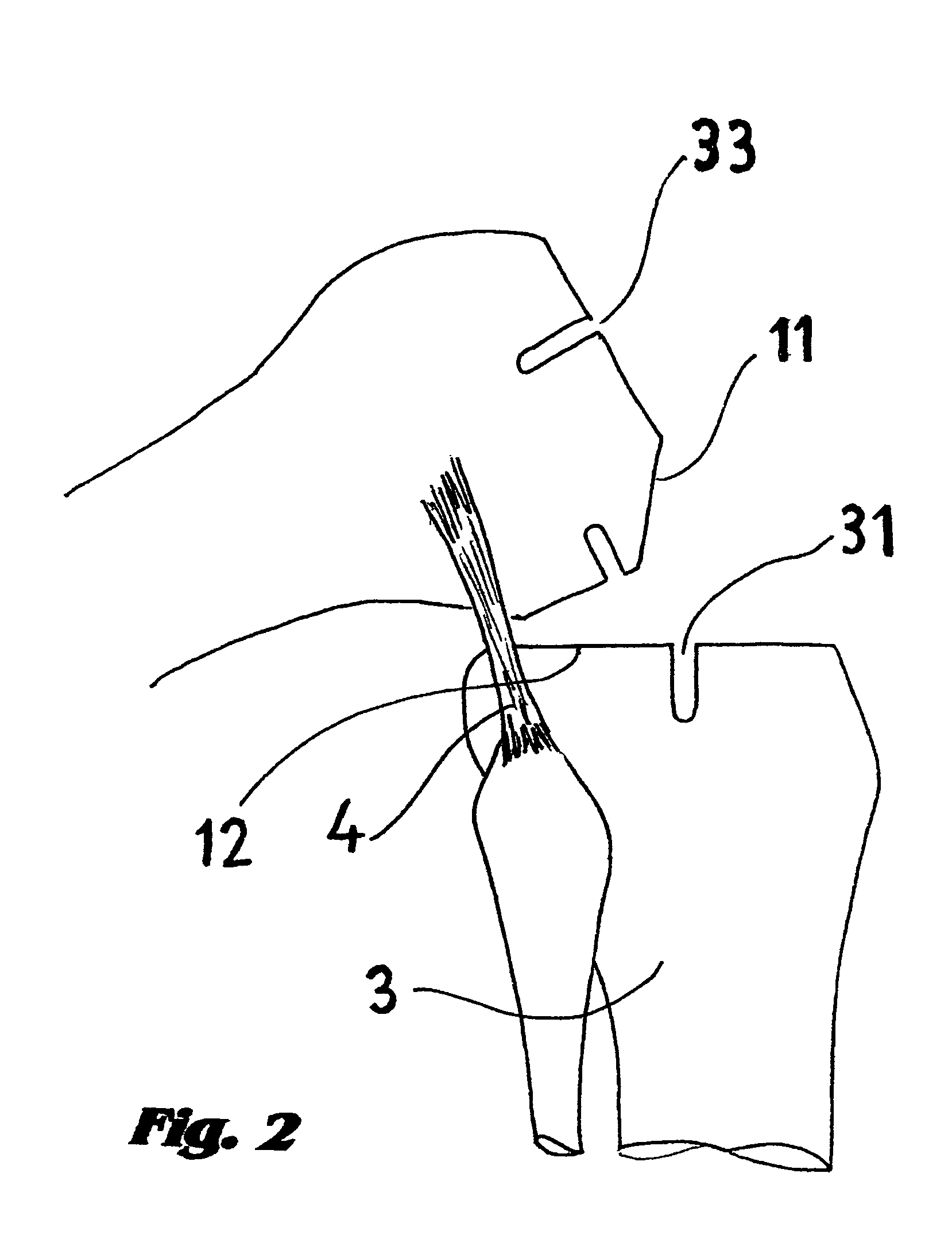Bicondylar resurfacing prosthesis and method for insertion through direct lateral approach
a bicondylar and prosthesis technology, applied in the field of bicondylar knee resurfacing prosthesis, can solve the problems of undue pain in the immediate post-operative period, extensive soft tissue disruption, irreparable scarring of major anatomical structures, and high failure rate of unicondylar prosthesis in general
- Summary
- Abstract
- Description
- Claims
- Application Information
AI Technical Summary
Benefits of technology
Problems solved by technology
Method used
Image
Examples
Embodiment Construction
[0036]Turning now descriptively to the drawings, in which similar reference characters denote similar elements throughout the several views, the attached figures illustrate a concise bicondylar knee resurfacing prosthesis, which comprises a thin metallic femoral arcuate component, a metallic tibial tray and a polyethylene tibial insert.
[0037]An arcuate metallic femoral component has a polished convex articular surface in a form of two condyles, medial 28 and lateral 25, that are connected with an intercondylar bridge 16.
[0038]The preferred embodiment of the present invention is a concise thin shell like bicondylar metallic arcuate component having a thickness between 2 millimeters at its thinner posterior condylar region 18 and 6 millimeters at the thickest weight bearing portion 17.
[0039]The concave surface has a metallic transverse ridge 14. Said ridge has the shape of a dovetail in its section and extends along the entire width of the femoral component, as depicted in FIG. 4. Sai...
PUM
 Login to View More
Login to View More Abstract
Description
Claims
Application Information
 Login to View More
Login to View More - R&D
- Intellectual Property
- Life Sciences
- Materials
- Tech Scout
- Unparalleled Data Quality
- Higher Quality Content
- 60% Fewer Hallucinations
Browse by: Latest US Patents, China's latest patents, Technical Efficacy Thesaurus, Application Domain, Technology Topic, Popular Technical Reports.
© 2025 PatSnap. All rights reserved.Legal|Privacy policy|Modern Slavery Act Transparency Statement|Sitemap|About US| Contact US: help@patsnap.com



